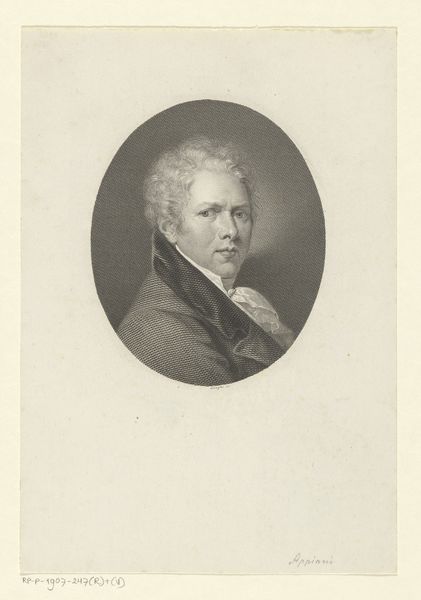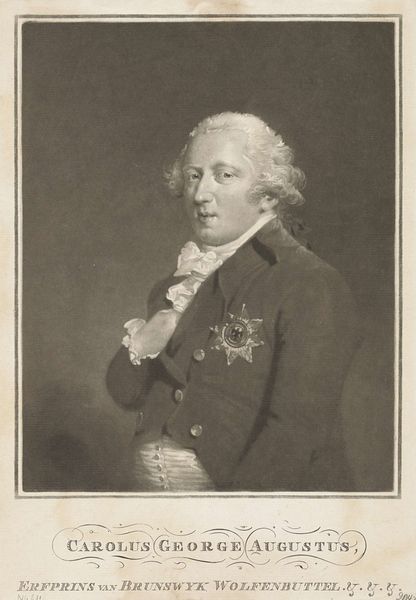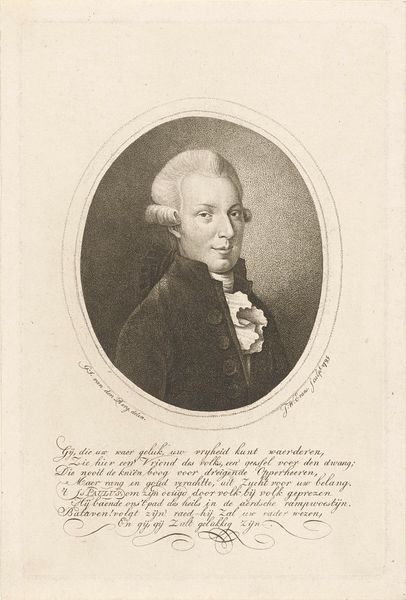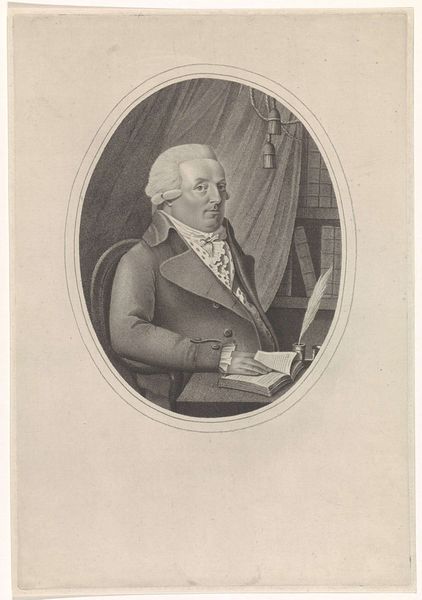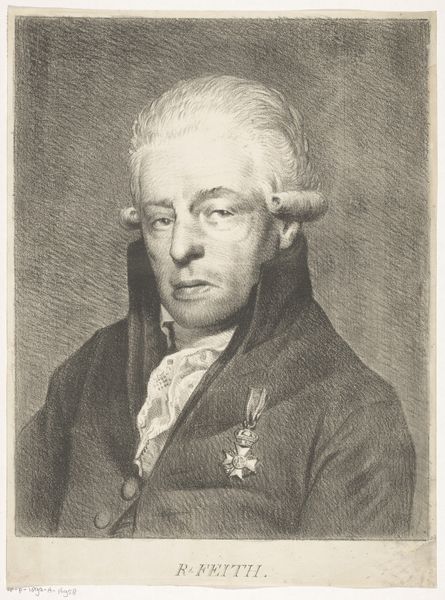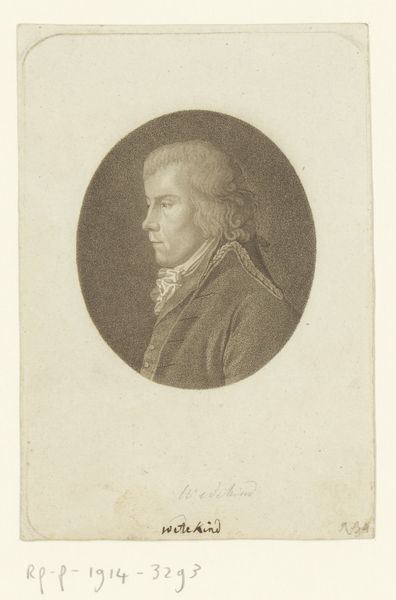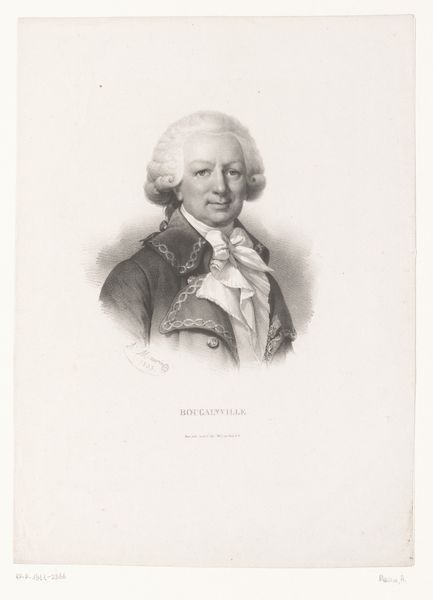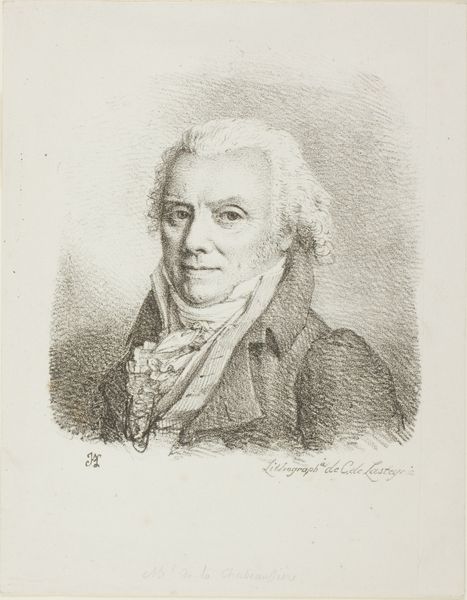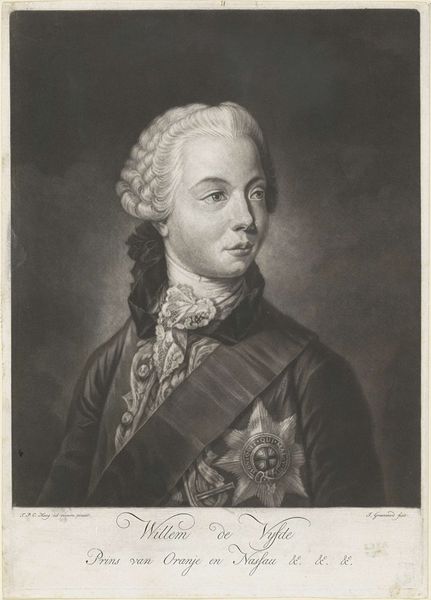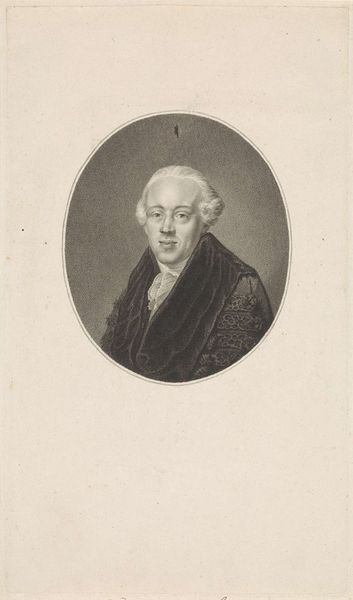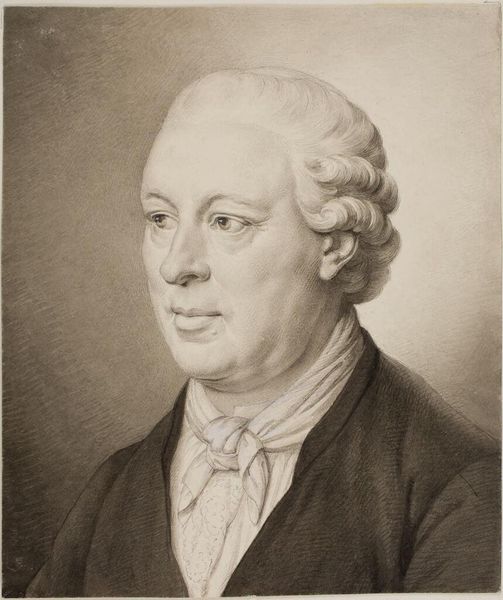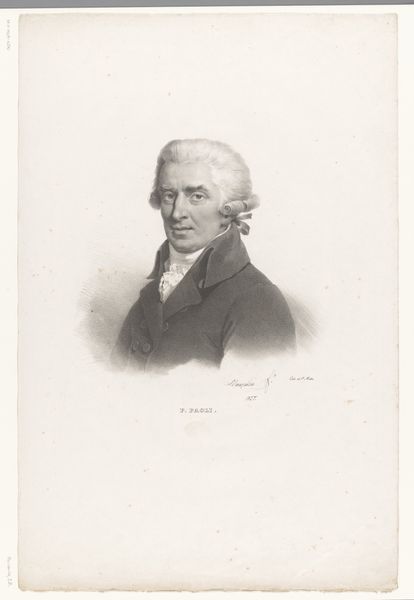
drawing, dry-media, graphite
#
portrait
#
drawing
#
charcoal drawing
#
dry-media
#
historical photography
#
classicism
#
graphite
#
portrait drawing
#
history-painting
#
academic-art
Dimensions: height 254 mm, width 216 mm
Copyright: Rijks Museum: Open Domain
Curator: This drawing, dating roughly from 1850 to 1930, offers us a glimpse into the likeness of Willem V, Prince of Orange-Nassau. While attributed to an anonymous artist, the piece resides here at the Rijksmuseum. Editor: Ah, a prince in sepia tones. He looks a bit like a startled owl, doesn't he? There's something both regal and slightly…puffed up about him. Curator: It is interesting how that slight puffiness speaks to the larger history. Consider the political and social context: Willem V’s leadership was marked by growing unrest and, ultimately, the Batavian Revolution. Editor: A revolution brewing beneath those powdered curls, eh? I can almost hear the whispers of dissent trying to penetrate his stately calm. Curator: Precisely. The artist, whether intentionally or not, captured a sense of detachment. Look at the medium used – likely charcoal and graphite – lending a soft, almost melancholic air to the piece. The precision in rendering his attire contrasts with the diffused background. Editor: It's a visual tiptoe, isn’t it? Like the artist wasn’t quite sure whether to admire or gently mock. All that finery—the lace, the velvet, the exquisitely useless adornments—it feels like a gilded cage closing in on him. The eyes especially have that haunted quality. What kind of burdens must that title, "Prince of Orange-Nassau," bestow? Curator: He certainly was burdened by the expectations of his lineage and the shifting tides of history. And it is essential to remember how historical portraiture like this reinforces notions of power, class, and identity that still reverberate today. Whose stories are told and how is it done, always reflects contemporary biases and agendas. Editor: Makes you wonder, doesn't it? About the narratives we choose to preserve and what gets lost in translation through sepia-toned lenses. He is preserved here but somehow seems absent. Curator: Absolutely, and this piece offers such fertile ground for exploring those very tensions. Editor: Yeah, a prince preserved on paper; he becomes not quite present, not quite forgotten.
Comments
No comments
Be the first to comment and join the conversation on the ultimate creative platform.
